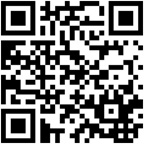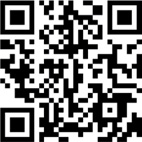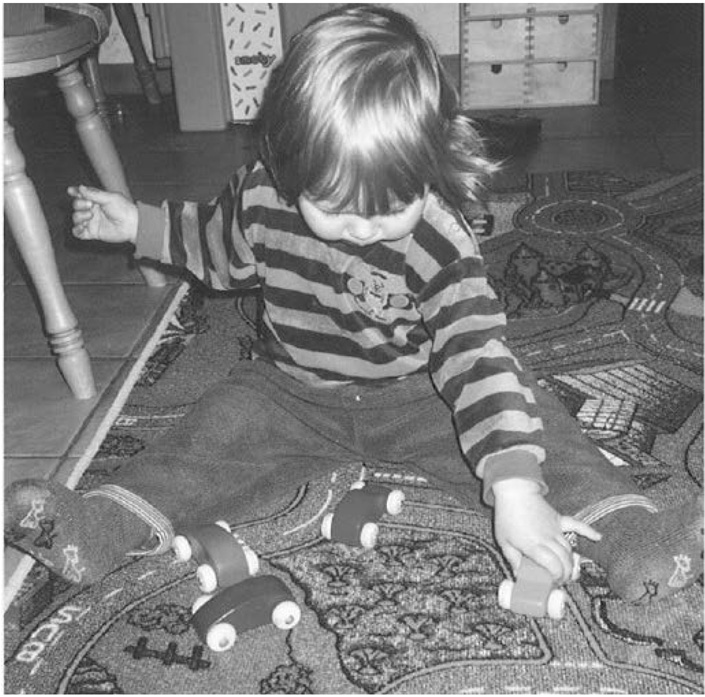
Полная версия
Happy to be Left-Handed


Frank Steinkopf
Happy to be Left-Handed
Recognize left-handedness easily
Nurture it properly
Let it shine!
Verlag Left Hander’s World

www.happy-to-be-left-handed.com

www.jeder-zweite-mensch-ist-linkshaender.de
All rights reserved, and in particular rights of reproduction, dissemination and translation. No part of this publication may be reproduced (e.g. by means of photocopying, storage on a microfilm, uploading/streaming to the internet or by any other means) or stored, processed, copied or disseminated with the aid of electronic systems without the prior written consent of the publisher.
ISBN 978-3-948352-02-8
1. Edition April 2020
Translated by: Twigg’s Translations, www.twigg.de
Editorial work: Jörg Poedtke
Cover design: Michael Oestreicher
Cover photo: Martin Liebmann
Layout and typesetting: Design on Location
E-Book production: Zeilenwert GmbH
Verlag Left Hander‘s World
Markt 36 · D-25746 Heide
Tel.: +49 (0) 481 683 750 60
info@Left-Handers-World.com
www.Left-Handers-World.com
Happy to be Left-Handed
Table of contents
Foreword
Foreword to the second revised edition
Foreword to the English edition
Part I – A general introduction to left-handedness
Chapter 1: Is there such a thing as a “typical” left-hander?
Chapter 2:Is left-handedness hereditary?
Chapter 3:What percentage of people are left-handed?
Chapter 4:Do converted left-handers experience specific difficulties?
Part II – Left-handers at pre-school
Chapter 5:Are a lot of children still converted?
Chapter 6: What if our child cannot decide if they are left or right-handed?
Chapter 7:What working materials do left-handers need during the first six years of their life?
Part III – Left-handers at primary and secondary school
Chapter 8:Why do left-handers write in the hook position?
Chapter 9:Do left-handers learn differently to right-handers?
Chapter 10:What working materials do left-handers need during their school years?
Chapter 11:Why do teachers need comprehensive knowledge of left-handedness?
Chapter 12:Why do essays by left-handers often miss the point?
Part IV – Left-handers in adulthood
Chapter 13:What special products do adult left-handers need?
Chapter 14:Do left-handers have typical weaknesses?
Chapter 15:Do we live in a right-handed world?
Chapter 16:Are converted left-handers better off switching back to left-handedness?
Part V– Special questions
Chapter 17:Can you test for left-handedness?
Chapter 18:Is handedness conversion a cause of dyslexia and dyscalculia?
Chapter 19:Can you predict the handedness of twins?
Chapter 20:Why are highly gifted people often left-handed?
My 10 Golden Recommendations
Appendix
Illustrative photos
Recommendations for further reading
Your handedness family tree
Photo credits
Quick test for handedness in 0 to 4 year olds
Quick test for handedness in adults
Acknowledgements
Index
About the author
Chapter 1

PHOTO NO. 1 The child prefers pushing the car with their left hand.
Is there such a thing as a “typical” left-hander?
Allow me to introduce a typical left-hander in the shape of Lena Leftley, a 16-year-old grammar school pupil.
Lena is highly sociable, has been voted class president on numerous occasions and looks after her fellow pupils as if it were the most natural thing in the world. She sometimes focuses so hard on others that she forgets herself.
Even as a ten-year-old, the first thing she did when she arrived home from school was to tell her mother about all the interpersonal problems between her classmates. It was only once she had gone through every last detail that she would remark, “Oh, by the way Mum, I got another A in my maths test.”
Lena loves the idea of spending her free time acting in a theatre group, singing in a choir, dancing and painting. She would ideally like to do all four, but she is not allowed to because it would get in the way of her schoolwork. It sometimes really annoys Lena’s mother that her daughter focuses so much on fun.
And that is not all: Lena is also extremely strong-willed, which regularly tests her mother’s temper. “Even as a four-year-old, Lena would happily repeat a request 33 times if it meant she got what she wanted,” her mother complains.
“When I said ‘no,’ she simply didn’t hear me. Or perhaps she didn’t want to hear me. Where on earth does she get it from?”
Her parents nevertheless refer to Lena as their “sunshine”. Lena’s left hand possesses greater dexterity, sensitivity, strength, speed and stamina than her right. She also tends to use her left hand when gesticulating. It is fair to say that Lena’s left side is her stronger side: She is left-footed, left-eyed and left-eared, carries bags on her left shoulder, wears rings on her left hand and refers to her left side as her “beautiful side”.
How can we tell if someone is a “left-hander” or a “right-hander”?
Both groups are recognisable by not only the hand and foot they use to carry out everyday tasks, but also the eye and ear they favour. What many people do not know: Left-handers can also be identified on the basis of their characteristic traits.
Typical signs of left-handedness:
•Use of the left hand: A true left-hander carries out all everyday tasks using the left side of their body. Can you think of twenty such tasks straight away? Here is a list of indicative examples: Writing, painting, holding a telephone, throwing, tooth brushing, eating, drinking, putting on make-up, using a computer mouse, eating with a spoon, cutting with a knife, using tools such as a hammer, a pair of pliers or a drill, playing racquet sports, weeding, watering plants, stroking animals.
•Use of the left foot or leg: Standing on one leg, hopping, jumping over obstacles, long and high-jumping, pushing along a scooter, kicking a football.
•Use of the left eye: Looking through a viewfinder, looking into a kaleidoscope, taking aim with a bow and arrow or a rifle.
•Use of the left ear: Listening, using a telephone, leaning towards the speaker during conversations.
People who carry out all important tasks left-handed are referred to as “active left-handers”. I would like to offer you the following definition:
Active left-handers write left-handed and carry out important everyday tasks using the left side of their body (i.e. their left hand, foot, eye and ear).
This definition also applies to right-handers, but the other way around.
A five-point introduction to left-handedness
Anyone who wishes to gain a good understanding of the topic of left-handedness needs to start with some basic knowledge. I am going to spare you a lot of specialist terminology and keep to the most important elements. In my opinion, there are five basic facts you need to know:
1. Handedness is pre-programmed into our brain.
Our brain consists of a left and a right half. Also referred to as a hemisphere, each half of the brain is about as large as a clenched fist. Perhaps you know this already, but there is one issue that is particularly important within the context of left-handedness: One half of our brain – either the left or the right – is “dominant”. It is not any larger, more beautiful or rounder than the other half, but simply more active.
2. The human body has a contralateral control system.
This means that the right hemisphere controls the left hand, foot, eye and ear. It is in fact responsible for the entire left side of the body, including the skin. The same also applies the other way around: The left hemisphere controls the right hand, foot, eye, ear and all the rest of the right side of the body.
3. A person with a dominant right hemisphere is therefore left-sided.
To put it in simple terms: Lena Leftley is left-handed. Remember that this applies to her entire left side, not just to her left hand, foot, eye and ear. One of the things Lena has in common with many other left-handers is that she refers to her left side as her “beautiful” or “best” side. She means the entire left side of her body, which is controlled by her dominant right hemisphere. Left-handers also prefer to have people they love on their left. They therefore feel more at ease sitting to the right of their partner.
4. Our dominant hemisphere is determined before we are born.
This fact is so fundamental that I am simply going to repeat it: Our dominant hemisphere – and with it our handedness – is determined before we are born. A person with a dominant right hemisphere is born left-handed; a person with a dominant left hemisphere is born right-handed.
5. Left-handers exhibit strengths attributable to the right hemisphere.
I was once introduced as an expert on left-handedness at a family celebration. Almost immediately, a 35-year-old man came up to me and introduced himself as a left-hander.
He was only half joking when he asked me the following question: “So, what exactly can a specialist in left-handedness do for me?”
“Perhaps I could guess your strengths?” I replied.
He liked the idea, as did the other guests. My guesses took the form of a series of questions:
“Are you sociable?” His wife responded straight away: “Yes, he’s always the one who sorts out arguments at the football club.”
“Do you possess any musical or theatrical talent?” This time it was the man’s neighbour who spoke: “Just wait until this evening!”
“Would you describe yourself as imaginative or creative?” “Yes,” responded the 35-year-old himself, “at work I’m known as the ‘ideas man’.”
“Are you strong-willed?” Who else should chime in but his mother? “Even as a child he was stubborn as a mule!”
“Do you have a good sense of colour?” His wife joined in once again: “He certainly does! He picks out matching colours as quick as a flash when we are out shopping for clothes.”
“Is it important to you that justice is done?” “Yes, as a child I always wanted to be a judge,” confirmed the left-hander.
“Have you got an eye for the big picture?” A slightly baffled colleague answered:
“Definitely, I have no idea how he manages to keep such close track of everything.”
It was the left-hander himself who rounded things off by exclaiming “Bull’s eye!” The other guests nodded in agreement. We all realised we were sitting with a true left-hander.
Knowledge in a nutshell
•People with a dominant right hemisphere
are left-sided. We call them “left-handers”.
•People with a dominant left hemisphere are right-sided. We call them “right-handers”.
•Our handedness is decided before we are born!
•Left-handers who write with their left hand and carry out important everyday tasks using the left side of their body (i.e. their left hand, foot, eye and ear) are referred to as “active left-handers”.
•Left-handers often exhibit the following strengths: Social skills, imagination, creativity, theatrical talent, willpower, musicality, sense of colour and an eye for the big picture.
•Right-handers are stronger in the following areas: Numbers, time, order, logic, reporting, recounting and analytical thinking.
Chapter 6

PHOTO NO. 6 Given the choice, the child always picks (with) their left hand.
What if our child cannot decide if they are left or right-handed?
It is June 2002, and Paul’s parents come to my practice with the following problem: “Our son starts school in three months – and we’re already at our wits’ end! You’re our last hope!”
How has it got to that point? A year ago, when Paul’s pre-school teacher asked if he might be left-handed, his mother realised that she had never really thought about it. As far as she was concerned, there was only one thing that mattered: Her child’s development. Handedness was a factor they had not considered before, so Paul’s parents set about gathering all the information they could find on the subject. They quickly found that everyone has something to say about left-handedness, and received a bewildering array of opinions and recommendations from their parents, friends and neighbours.
Paul regularly switches between his hands and does not appear to have a preference. Some days he does a lot with his left hand, while on others the opposite is the case. Despite their new knowledge and a wealth of conversations on the topic of handedness, his parents are still unable to determine whether their son is a left or right-hander. His mother senses that Paul is left-handed, but the lack of a definitive diagnosis and a clear course of action are only serving to make her increasingly tense as her son’s first day of school approaches. She even begins to suffer from a sleep disorder. Things begin to improve when the family doctor urges Paul’s parents to have their son tested for left-handedness. This initiates a new phase of discovery and clarity – not least for Paul.
It is me who tests Paul, and I am able to confirm that his mother was right – he is indeed left-handed. But that is just the beginning, as I am sure you can imagine. Two weeks later, I receive an extremely revealing telephone call from Paul’s mother: “Paul is doing really well. He was still a bit sceptical on the day of the test itself, but everything changed within just a few hours. On the way home in the car, he said, ‘Mum, this is the best day of my life. I’m left-handed!’ He’s since become much more proficient at using his left hand, his mood has improved dramatically and he’s even done a painting of his own free will for the first time in five years.”
Upon hearing this, I suggest that Paul’s mother gives his pre-school teacher a bouquet of flowers as a token of her gratitude. After all, it was her that got the ball rolling. We are often far too slow to give positive feedback to the people responsible for our children’s education!
Children are already left or right-handed at birth.
If you are now thinking “My word, recognising left-handedness sounds really tricky!” then I can put your mind at rest. It is far easier than you might think. Allow me to start by dispelling two widely held myths that may prevent you from finding out if your child is naturally left-handed:
1.Many parents assume that their child only becomes a left or right-hander between the ages of three and six. This could not be further from the truth! It is our genes that determine whether we are left or right-handed.
2.Many parents are convinced that their child decides on a preferred side during the first four to six years of their life. Here again: This is wrong! It is impossible for children to decide for themselves, because they are already left or right-handed at birth.
Both of the above assumptions cause parents and other adults to ignore signs of left-handedness. Even if a child uses the left side of their body a lot during the first few years of their life, we often fail to either notice or grasp the significance of the respective indicator.
The “left-handed or right-handed?” puzzle
Many parents have it easy: From the moment they are born, their child clearly demonstrates whether they are left or right-handed. As a mother once said to me, “Our son did everything left-handed right from the word go. And when I say everything, I mean everything!”
Other children, however, appear to have set themselves the task of making life as difficult as possible for their parents – with the “left-handed or right-handed?” puzzle.
They do not reveal their handedness just like that, they keep you guessing. If this sounds like your child, then I recommend you take a sporting approach. You will soon see that solving the problem can be great fun. You might find the following tips and instructions helpful. Whichever path you choose, the most important thing for you and your child is that you solve the puzzle at least one year before they start school.
The following indicators form part of my instructions on how to solve the “left-handed or right-handed?” puzzle.
23 key indicators that show your child may be left-handed
These indicators are an easy way to identify left-handed children between the ages of three and six.
I have only selected indicators that are a reliable sign of left-handedness.
Hands
•Which hand does your child use to reach for things you hand to the middle of their body?
•Which hand does your child hold their bottle in?
•Which of their thumbs does your child suck?
•Which hand does your child first use to explore their mouth?
•When teaching your child how to eat with a spoon, put one spoon in each of their hands. Which hand do they favour?
•Which hand does your child offer you when you ask them to shake hands?
•Which hand does your child use to pick their nose?
•Which hand does your child stroke animals with?
•When excited, which hand does your child reach for their mouth or face with?
•Your child wants to unscrew a bottle top. Do they use their left or right hand?
•It is time to open a new jam jar. Which of your child’s hands is stronger?
Feet and legs
•Which leg can your child keep their balance on for longer?
•Ask your child to hop on one leg. Which leg do they choose to hop on?
•When riding a scooter, which foot does your child use to push themselves along?
•Create an obstacle and ask your child to jump over it. Which foot do they take off from?
Ears
•Whisper something. Which ear does your child listen with?
•Which side of their head does your child turn towards you when you read them a story?
•Which of their ears does your child hold the telephone to?
Eyes
•Give your child a camera (not a mobile phone) and ask them to take a photo. Which eye do they look through the viewfinder with?
•Which eye does your child use to look through a kaleidoscope or telescope?
•Which eye does your child use to peek through a keyhole?
About the author

Frank Steinkopf was born in 1961, and is himself left-handed. After gaining his teaching degree, he spent 10 years as a PE teacher at a number of different state schools. He has run an educational therapy practice and advice centre for left-handers since 1995. Frank assists parents in identifying and actively nurturing left-handedness in their children.
He also helps adult converted left-handers enhance their quality of life by retraining to use their naturally stronger left side.
His main areas of focus are as follows:
1. Educational therapy in the fields of dyslexia and dyscalculia
The eight-step dyslexia method developed by Frank and his team enables children and adults alike to gain full control of their dyslexia and/or dyscalculia.
2. Left-handedness: Advice, testing and retraining
The Frank Steinkopf Handedness Test is a simple way to determine handedness in people of all ages.
Frank is also a specialist in the retraining of converted left-handers to use their naturally stronger left side. His therapeutic approach is based on the following motto: “Left-handed at last! 11 steps to a better quality of life using the Frank Steinkopf Retraining Method.”
3. Development and distribution of products for left-handers and educational therapy applications
Left Handers World offers selected books, learning aids, teaching materials and consumer goods that will help left-handers of all ages master everyday activities in the home, at school and in the office.
Frank Steinkopf delivers talks, workshops and seminars on all of the above topics.
Please refer to the following websites for further information:
Left-handedness: www.Left-Handers-World.com
Educational therapy: www.Legasthenie-Praxis-Steinkopf.de
Questions and orders can be directed to Frank Steinkopf and his team by sending an email to info@Left-Handers-World.com or calling +49 (0) 481 67 940.


